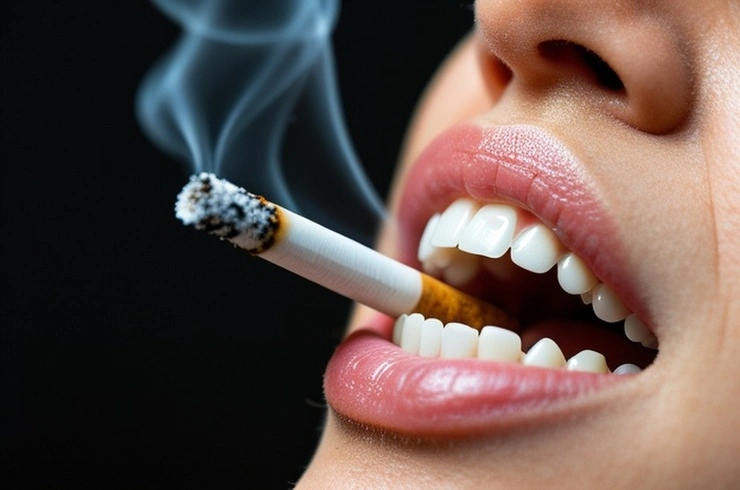
Smoking and using other tobacco products extend their damage far beyond lung health, significantly impacting your oral cavity. From bad breath to an increased risk of oral cancer, the consequences are extensive and often irreversible. Understanding these risks is the first step toward safeguarding your dental well-being.
One of the most common issues linked to tobacco use is bad breath and tooth discoloration. Beyond these surface-level problems, tobacco causes the inflammation of salivary gland openings and accelerates the buildup of plaque and tartar, leading to a grittier mouthfeel and a higher likelihood of cavities. More alarmingly, tobacco weakens the very foundation of your teeth by contributing to increased bone loss within the jaw and a higher risk of leukoplakia, white patches in the mouth that can be pre-cancerous.
Perhaps the most significant dental threat posed by tobacco is gum disease, a leading cause of tooth loss. Tobacco products interfere with the normal function of gum tissue cells, making users highly susceptible to infections like periodontitis. This interference also impairs blood flow to the gums, severely hindering wound healing after any dental procedure, such as extractions or oral surgery. For those considering dental implants, tobacco use drastically lowers the success rate of these procedures, undermining significant investments in oral health.
Many believe that switching to pipes, cigars, or smokeless tobacco offers a safer alternative, but this is a dangerous misconception. Research indicates that cigar and pipe smokers face tooth loss and jawbone loss at rates comparable to cigarette smokers. They also remain at high risk for oral and throat cancers, even without inhaling. Similarly, smokeless tobacco products like snuff and chewing tobacco are far from harmless. They contain numerous carcinogens and often deliver higher nicotine levels than cigarettes, making them incredibly addictive. Smokeless tobacco can cause gum recession, exposing sensitive tooth roots to decay and discomfort. The added sugars in many smokeless products further contribute to tooth decay, with studies showing a fourfold increase in decay for users. The abrasive sand and grit often present in smokeless tobacco also wear down tooth enamel.
The good news is that it's never too late to quit. Even after years of tobacco use, quitting can dramatically improve your oral health. Studies show that within 11 years of quitting, former smokers' risk of gum disease can become comparable to non-smokers. Even reducing your tobacco intake can yield significant benefits. For instance, mouth lesions like leukoplakia often resolve completely within weeks of quitting smokeless tobacco.
Quitting tobacco is challenging, but support is available. Your dentist or doctor can offer resources like nicotine replacement therapies (gums, patches) or prescription medications. Smoking cessation classes and support groups, often available through local hospitals or insurance providers, can provide invaluable guidance and encouragement. Some individuals also find success with alternative therapies like hypnosis and acupuncture. Taking the step to quit will not only improve your oral health but also significantly reduce your risk of developing life-threatening oral cancers, which are overwhelmingly linked to tobacco use.
Pro Tip
The content of the article is shared by netizens, please carefully identify it